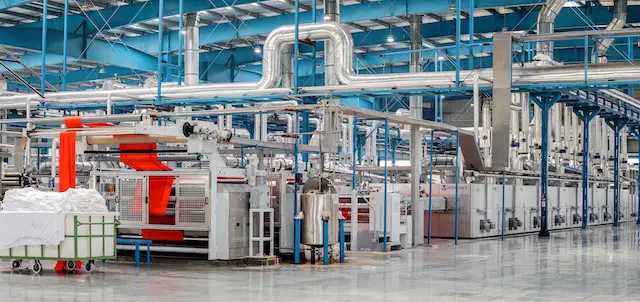Efficiency is the key to success in the fast-paced world of manufacturing and production. Companies are always looking for methods to streamline workflows, improve efficiency, and streamline operations. Numerous tactics have emerged as a result of this pursuit of operational excellence, and in this article, you’ll look at a thorough 5-step process for streamlining manufacturing and production processes.
Steps to Simplifying Manufacturing and Production
1. Embrace Lean Manufacturing Principles
Adopting lean manufacturing principles is the first step toward streamlining industrial operations. The goals of lean manufacturing are to reduce waste, increase productivity, and improve overall quality. Determining and reducing non-value-added tasks is an essential step. Through comprehensive production process analysis, enterprises can identify areas of resource underutilization or redundancy.
Putting in place a pull-based manufacturing system, in which work is started in response to client demand, can greatly cut down on overproduction and surplus inventories. In addition to streamlining the production process, this guarantees effective resource allocation. Additionally, encouraging a culture of continuous improvement gives staff members the ability to recognize and resolve operational inefficiencies, which enhances the performance of lean manufacturing as a whole.
2. Integrate Advanced Technologies
A plethora of technical innovations brought forth by Industry 4.0 have the potential to transform manufacturing and production processes completely. Businesses need to use emerging technologies like automation, artificial intelligence (AI), and the Internet of Things (IoT) in order to remain competitive.
A key step in this direction is to invest in manufacturing software which you can get from a top-rated firm. Businesses can make data-driven decisions by using this software to monitor production processes in real time. Along with cutting lead times and error risk, it improves visibility throughout the supply chain. Businesses can also avoid unplanned equipment failures and guarantee continuous output by utilizing predictive maintenance skills.
3. Optimize Supply Chain Management
It is necessary to have effective management of the supply chain in order to streamline production operations. The entire supply chain, from the procurement of raw materials to the delivery of the finished product, is something that companies need to concentrate on optimizing. It is essential to work together with suppliers since doing so contributes to the development of a supply chain that is both resilient and responsive.
Businesses are able to effectively anticipate market changes and adjust their production in accordance with such trends when they make use of sophisticated forecasting models and demand planning technologies. This preventative strategy reduces the likelihood of either overstocking or running out of a product, guaranteeing that the production process is both balanced and simplified. In addition, the implementation of a just-in-time inventory system decreases the amount of surplus inventory, which results in cost reductions and enhanced operational effectiveness.
4. Implement Agile Manufacturing Practices
Agile manufacturing methods place a strong emphasis on adaptability and quickness to changing market conditions. This strategy calls for the capacity to react swiftly to changes in consumer preferences, product specifications, or industry trends. Businesses should invest in adaptable production systems that can easily handle changes if they want to execute agile manufacturing.
Employees who receive cross-training to perform several activities are more flexible in the workplace and can respond quickly to changing production needs. Furthermore, encouraging cross-departmental cooperation and open lines of communication guarantees that all parties are in agreement with the agile manufacturing concept. Businesses need to be flexible in order to remain competitive in the ever-changing market environment of today.
5. Prioritize Employee Training and Engagement
Improving technology alone won’t simplify industrial processes; a trained and motivated crew is also essential. To guarantee that employees are capable of operating new technology and adjusting to changing procedures, employee training is essential.
Establishing a culture of ongoing learning and development also encourages staff members to offer suggestions for streamlining operations. Workers who are actively involved in the implementation of new strategies are more likely to proactively detect bottlenecks, offer process changes, and show initiative. Promoting innovation and acknowledging staff accomplishments cultivates a happy workplace that supports operational excellence.
Conclusion
The process of streamlining production and manufacturing processes is complex and calls for a comprehensive, strategic strategy. Businesses can set themselves up for improved productivity, lower costs, and long-term success in the cutthroat manufacturing sector by adopting lean manufacturing principles, incorporating cutting-edge technologies, streamlining the supply chain, putting agile manufacturing processes into practice, and placing a high priority on employee engagement and training. A key component of this process is the integration of software, which acts as a catalyst for operational excellence and data-driven decision-making.


The content Team Writer is one of the writers from our team of content writers. The Business Goals blog is expanding day by day and we need more writers and brand ambassadors for promoting our media website. If you are interested contact your portfolio through the Write for Us page.














































